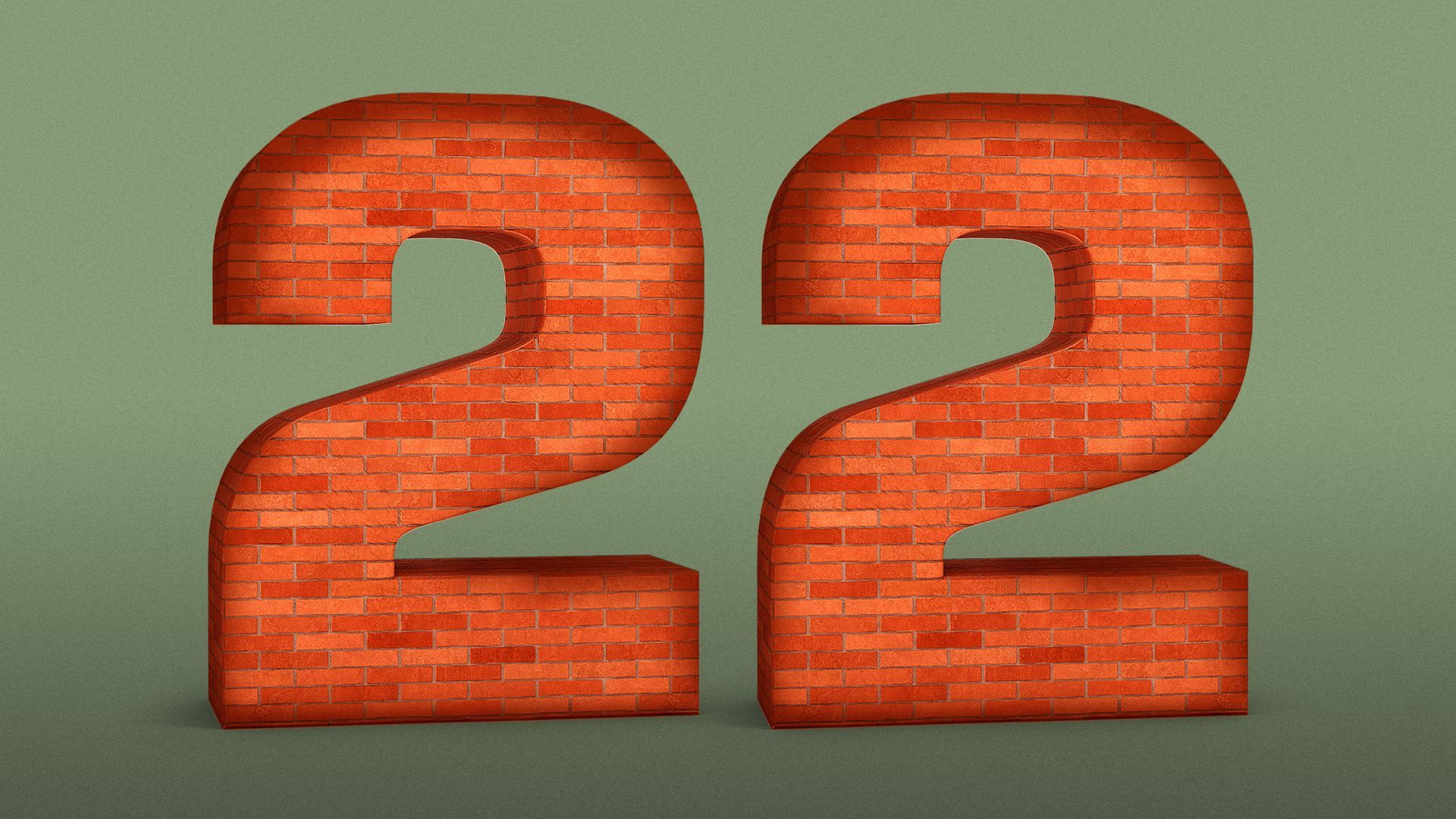Philadelphia-based mall owner Penn REIT files for second bankruptcy in three years

Illustration: Aïda Amer/Axios
A Philadelphia-based mall owner's 2020 bankruptcy deal was supposed to provide a bridge to better times. But then the Federal Reserve started raising interest rates.
Driving the news: Pennsylvania Real Estate Investment Trust, or PREIT, filed for Chapter 11 bankruptcy late Sunday. The filing is effectively a "Chapter 22" — industry slang for a repeat filer.
Why it matters: The longer the Fed waits to start cutting rates, the more companies will face a similar fate — especially those with debt structures put in place before COVID-19, when the economy was completely different and cheap debt was abundant.
What happened: PREIT's $1.1 billion in debt matured on Dec. 10. Leading up to the maturity date, the company tried to raise cash by selling assets, most of which are located in the East Coast and mid-Atlantic regions, including Philadelphia and Washington, D.C.
- But it ran up against the lingering negative investor sentiment on the mall sector and depressed valuations, according to CFO Mario C. Ventresca Jr., in bankruptcy papers filed Monday.
- PREIT's adviser, PJT Partners, showed the assets to about 50 different potential buyers but only got one indication of interest. That proposal valued PREIT at an amount lower than the company's total debt.
Flashback: PREIT filed for its first bankruptcy in November 2020, amid the pre-vaccine, stay-at-home economy.
- The bankruptcy plan back then did something relatively unusual: It didn't reduce any debt, nor did it cancel any equity. Instead, it pushed debt maturities to a later date and raised additional cash from investors.
- In other words, the bankruptcy deal bought it time. It was a "bridge to a normalized environment" so the company could "recover from the extended closures experienced in conjunction with the nationwide response to the pandemic," Ventresca noted.
Between the lines: Judging from Sunday's bankruptcy filing, that so-called normal environment never arrived. Brick-and-mortar retail foot traffic has rebounded, of course — but the pandemic helped accelerate and solidify the share of shopping that has migrated online.
- Many shopping centers, including PREIT, have attempted to adapt to the e-commerce world by reinventing the mall experience, and adding new types of tenants.
- PREIT, for its part, said that in recent years it's leased a larger share of its properties to non-traditional mall tenants — like health care providers, supermarkets and self-storage facilities.
- Those sorts of transformations cost money — which is more expensive nowadays.
The plan: Under PREIT's bankruptcy plan, which its lenders have already approved, most of its debt will convert into equity. That means the lenders will forgive what they're owed, and take over ownership of the company. The shareholders will effectively be wiped out.
- The company is aiming for a fairly quick stint in court — it plans to emerge from bankruptcy within two months.
The bottom line: Nearly two years after the Fed started raising rates, we're just starting to see how the "long and variable lag" of monetary policy will impact all kinds of borrowers throughout the economy.
Go deeper: Higher for longer rates will test corporate debt's maturity wall
